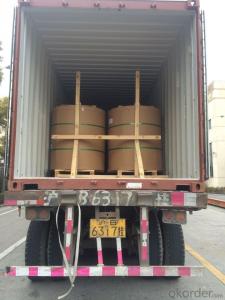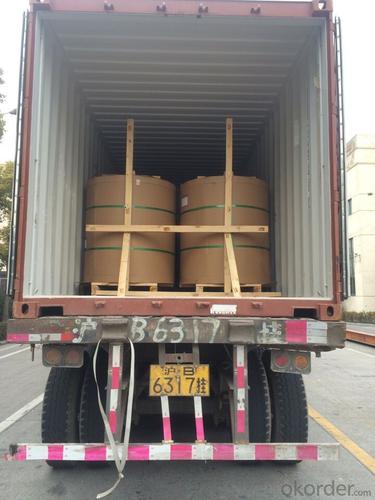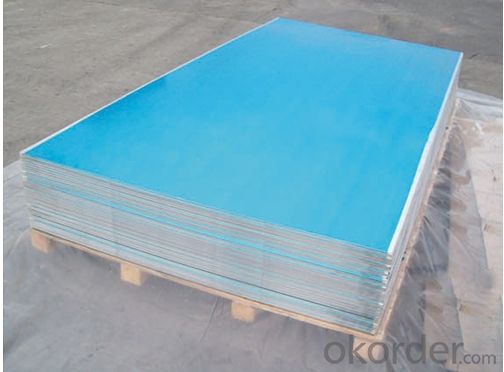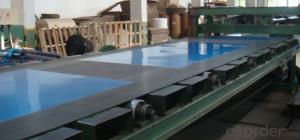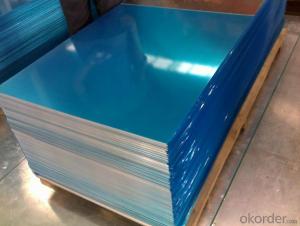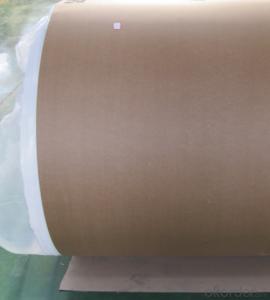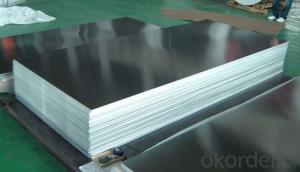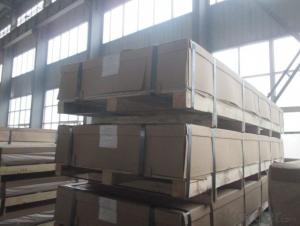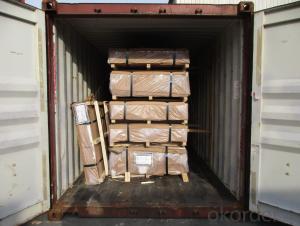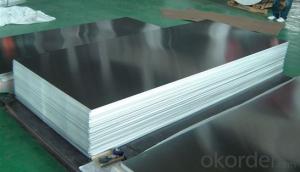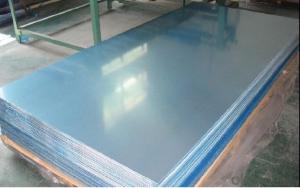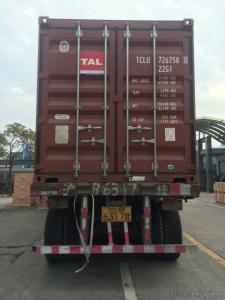Angle Aluminum Sheets with Best Discount Price in Our Warehouse
- Loading Port:
- Shanghai
- Payment Terms:
- TT OR LC
- Min Order Qty:
- 9 m.t
- Supply Capability:
- 200 m.t/month
OKorder Service Pledge
OKorder Financial Service
You Might Also Like
Specification
1.Structure of Product Description
Cold rolled aluminum sheet is widely used in the field of construction field and decoration field, etc.
There are many different grades, such as: 1000 series, 2000 series, 3000 series, 5000 series, 6000series, etc. The detailed grade are as follows: 1010, 1050,1060,1100, 2024, 3003, 3005, 3105, 5052,5754,5083,6061,6063,8011, etc.
The temper is include H14, H22, H24, H44,H112,H114,etc.
2. Main features of the product
a.Competitive price
b.Frist-Class Service.
c. Shortest service.
3. Image.
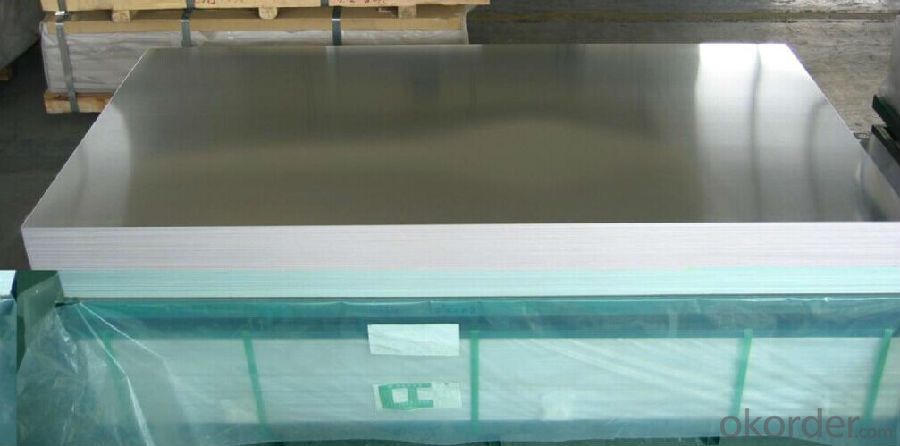 4. Product detailed sizes:
4. Product detailed sizes:
1000mm*2000mm, 1219mm*2438mm,1220mm*2440mm, 1250mm*2500mm,1500mm*3000mm, etc.
5. FAQ:
What is the quality standard?
---Usually our standard is GB3880-2006 or others.
What is the width range?
---It is from 1000mm to 2500mm, etc.
What is the length range:
---It is from 2000mm to 6000mm, etc.
What is the MOQ for your products yet?
---Normally it is around 5 tons/each size.
How many tons did you export in one year?
---Normally it is around 9000 tons totally.
Where is your client from?
---Normally they are aluminum sheet, checkered sheet, mirror finish aluminium sheet, aluminum casting coil, etc.
- Q: How do you store aluminum sheets?
- To store aluminum sheets, it is important to consider their size, weight, and overall condition. Here are some steps you can follow: 1. Choose a suitable location: Find a dry and well-ventilated area with stable temperatures, preferably indoors. This will help prevent moisture and humidity from causing corrosion or damage to the aluminum sheets. 2. Protect against moisture: Use plastic or moisture-resistant sheets to wrap each aluminum sheet individually. This will create a barrier against moisture and prevent any potential corrosion. Avoid using materials that may react with aluminum, such as acidic or alkaline substances. 3. Organize and stack: If you have multiple aluminum sheets, consider organizing them based on their size, thickness, or other relevant factors. This will make it easier to access specific sheets without disturbing the entire stack. When stacking the sheets, place larger and heavier ones at the bottom to avoid any potential damage. 4. Utilize racks or pallets: If you have a larger quantity of aluminum sheets, using racks or pallets can provide additional support and stability. Ensure the racks or pallets are strong enough to handle the weight and are designed to prevent any deformation or bending of the sheets. 5. Label and document: It is helpful to label each sheet with relevant information such as size, thickness, or any specific details. Additionally, keeping a detailed inventory or catalog of your aluminum sheets can help you easily locate and retrieve specific ones when needed. 6. Regular inspection: Periodically inspect your stored aluminum sheets to ensure they remain in good condition. Look for signs of corrosion, damage, or any other issues that may require immediate attention. By following these steps, you can effectively store aluminum sheets, protecting them from damage and ensuring their longevity.
- Q: How do you prevent galvanic corrosion when using aluminum sheets with saltwater?
- To avoid galvanic corrosion when utilizing aluminum sheets in saltwater, there exist several steps that can be taken: 1. The application of protective coatings is one effective method. This can be accomplished by employing specialized marine-grade paints or coatings specifically designed to hinder corrosion in saltwater environments. These coatings act as a barrier between the aluminum and the saltwater, effectively reducing the probability of galvanic corrosion. 2. Another approach involves the utilization of isolation materials, such as rubber or plastic gaskets, between the aluminum sheets and any dissimilar metals that may come into contact with them. These materials prevent direct contact between the aluminum and other metals, thereby minimizing the risk of galvanic corrosion. 3. Galvanic corrosion inhibitors can be added to the saltwater to help mitigate the risk of corrosion. These inhibitors function by creating a protective layer on the aluminum surface, thereby preventing the electrochemical reactions that lead to galvanic corrosion. 4. The implementation of cathodic protection techniques can also assist in preventing galvanic corrosion. This entails connecting the aluminum sheets to a sacrificial anode made from a more active metal, such as zinc or magnesium. The sacrificial anode corrodes instead of the aluminum, thus safeguarding it from galvanic corrosion. 5. Proper maintenance is crucial in preventing galvanic corrosion. Regularly cleaning and maintaining the aluminum sheets is essential, as saltwater and other contaminants can accumulate on the surface, promoting corrosion. Cleaning the sheets with fresh water and eliminating any salt deposits can help prolong their lifespan and reduce the risk of galvanic corrosion. It should be noted that these preventive measures should be implemented alongside proper material selection and design considerations. Seeking guidance from corrosion experts or engineers specializing in marine applications can provide further insight into the specific requirements and best practices for preventing galvanic corrosion when using aluminum sheets in saltwater.
- Q: I'm wanting to buy colorguard poles, and I found some good deals on aluminum and fiberglass ones. But what are the pros and cons of each one?
- I'd say fiberglass because... - Durability - Aluminum is a very bendable metal. It dents, it bends, and it breaks easier than any other metal pole you'll find. This is because it's a very low density metal. - Flexibility = more dramatic twirling due to pole flex, and it's less breakable. - Counter Weight = A flag on one side of the pole would be harder to move around swiftly without a counterweight. Thus a heavier pole would entail having a center of gravity on the flag pole closer to the hand, making it easier to maneuver the flag, but the pole would be harder to lift as a whole. I'm no expert on colorguard poles, though. Fiberglass has come a long way. While aluminum is always the same material, fiberglass is a constantly evolving building material.
- Q: why does the bubble apear a few minutes later after putting aluminum sheet into dilute sulphuric acid?
- Because there is oxide on the surface of aluminum, the reaction will be quicker after polishing the oxide with abrasive paper.
- Q: Can the aluminum sheets be used for manufacturing ventilation systems?
- Yes, aluminum sheets can be used for manufacturing ventilation systems. Aluminum is a lightweight and corrosion-resistant material, making it a suitable choice for ventilation systems. Its high thermal conductivity allows for efficient heat transfer, making it ideal for applications where temperature control is necessary. Additionally, aluminum is easily formable, allowing for the creation of complex shapes and designs required for ventilation systems. Overall, aluminum sheets are a popular and practical choice for manufacturing ventilation systems.
- Q: What is the tensile strength of 101 aluminum sheets?
- The tensile strength range for 101 aluminum sheets can differ based on a variety of factors, including the manufacturing process, heat treatment, and specific alloy composition. Typically, 101 aluminum sheets exhibit a tensile strength of about 27,000 to 42,000 pounds per square inch (psi). It is crucial to acknowledge that this range is only an estimation, and real tensile strength values may have slight variations. To accurately determine the precise tensile strength of 101 aluminum sheets, it is advisable to consult the manufacturer's data sheet or conduct additional testing.
- Q: I have to repair a cracked aluminum engine block. What alumunum epoxy should I use?
- elmers glue! Lol. I believe you can have it welded. That will last for a while.or until you can get another one.
- Q: What is the price range of 101 aluminum sheets?
- The price range of 101 aluminum sheets can vary depending on factors such as size, quantity, and supplier. However, generally speaking, the price range for 101 aluminum sheets can be anywhere from $50 to $150 per sheet.
- Q: Are aluminum sheets suitable for heat sinks?
- Yes, aluminum sheets are suitable for heat sinks. Aluminum has excellent thermal conductivity, which allows it to efficiently transfer heat away from the source. It is also lightweight, cost-effective, and easily manufacturable, making it a popular choice for heat sink applications.
- Q: What is a composite aluminum plate?
- The aluminum plastic composite plate is a composite material made of chemically treated coated aluminium plate as surface material, polyethylene plastic as core material, and manufactured on special aluminum plate production equipment.The unique properties of aluminum-plastic composite board itself has decided, its wide application: it can be used for building exterior wall, curtain wall, old building renovation, interior walls and ceiling decoration, advertising signs, display rack, dust purification engineering. The utility model belongs to a new type of building decoration material.APCP (also called APCP) as a new type of decorative materials, since the last century at the end of 80s early 90s from South Korea to China, with its economy, optional color diversity, convenient construction method, excellent processing performance, excellent fire resistance and noble quality, quickly favored by people.
Send your message to us
Angle Aluminum Sheets with Best Discount Price in Our Warehouse
- Loading Port:
- Shanghai
- Payment Terms:
- TT OR LC
- Min Order Qty:
- 9 m.t
- Supply Capability:
- 200 m.t/month
OKorder Service Pledge
OKorder Financial Service
Similar products
Hot products
Hot Searches
Related keywords
